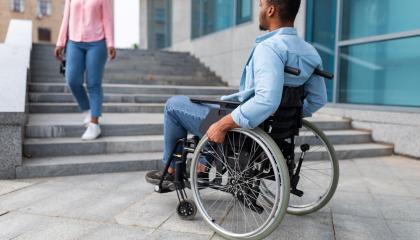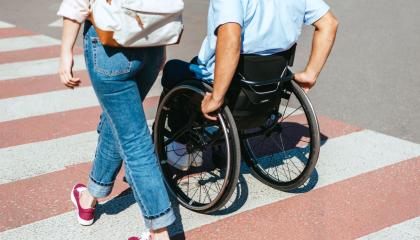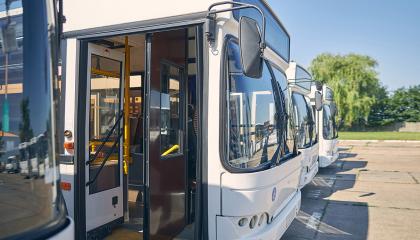When it comes to transportation, people prioritize convenience. Whether taking a two-hour flight instead of a ten-hour drive or utilizing public buses rather than walking, convenience drives pedestrians’ and commuters’ decisions.
In New York City, amidst its bustling streets and sprawling transit network, a less spoken narrative exists. While the city brings in dreamers, creatives, and those with amazing ambitions, it also chases away a vital community that makes up its boroughs—people with visual and physical disabilities.
The numbers tell a sobering story:
Accessible transportation is crucial in ensuring equal opportunities, independence for individuals with disabilities, and a way for people to get from point A to point B. Therefore, transportation systems must be designed and operated to accommodate all passengers' diverse needs. In this article, we will explore the best practices for ensuring accessibility in transportation so that everyone can navigate and enjoy the benefits of a well-connected society.
First and foremost, detectable warning tiles and surfaces were designed to assist individuals with disabilities to safely navigate public spaces, and then, in 1991, the Americans with Disabilities Act (ADA) mandated the use of detectable warning tiles in public areas throughout the United States.
A wheelchair can mean the ticket to independence for some individuals, but the regular built environment is rarely arranged in a way that is easily navigable by individuals using wheelchairs. Beyond the built environment, social interactions can cause an extra strain on those who rely on wheelchairs as their primary mode of mobility. These social and infrastructural barriers impede the lives of wheelchair users every day.
Individuals with disabilities must navigate a world designed for people with vision and mobility, and one tool that helps to make the world more accessible is navigational bar tiles. These directional tile surfaces consist of raised bars that align with the direction of pedestrian travel. These navigational directional bar tiles help people to locate the entrance to light rails, trains, and bus stops.
A companion to detectable warning tiles, navigational and directional bar tiles serve an essential purpose of guiding individuals with disabilities in the flow of traffic.
The development of larger cities grew exponentially in the past fifty years, leaving us with rapidly built cities that have given too little thought to the disabled members of their population. Now is the time to reassess how to be more inclusive in the built environment so that people of all abilities and diversity experience a living environment that meets their needs.
The Arizona State Transportation Board finalized and approved the 2022-2026 Five-Year Transportation Facilities Construction Program with plans for major corridor improvements, pavement upgrades, and more for highways. The next five years will include highway improvements from widening highways to improving safety that will cost $1 billion annually.
To serve the community of individuals with disabilities, many state and local governments and some private companies have established paratransit transportation options. Paratransit transportation is meant to supplement public fixed-route bus and rail systems for individuals with severe impairments. From a taxi-like service to a semi-defined route, paratransit services often have varying levels of flexibility.
Private accessible transportation refers to transportation that caters to individuals with impairments. While not necessarily in the public sector, private transportation includes volunteer driver programs, para-transit services, and ride-shares which must comply with the Americans with Disabilities Act (ADA).
Pagination
- Page 1
- Next page
Connect with us
We pride ourselves on our customer service, and we'd love to hear from you! Sign up for our newsletter to keep up with industry updates and trends, as well as any new product releases.












